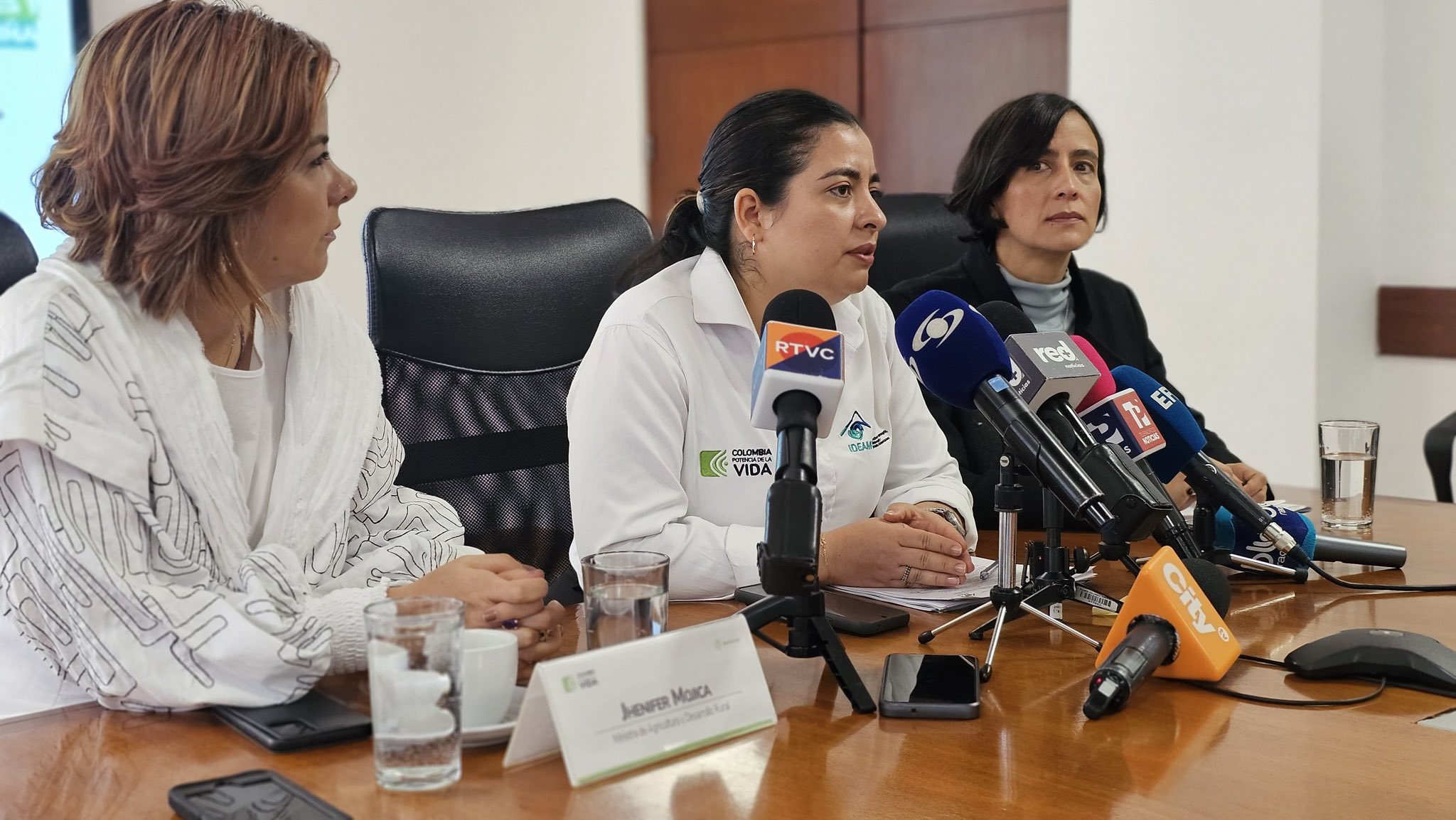'IDEAM is an entity that was created 30 years ago with a logic that is not those of today': Ghisliane Echeverry, director of the institute

Amid a growing demand for rigorous and accessible environmental information, the Institute of Hydrology, Meteorology, and Environmental Studies (IDEAM) is undergoing an internal transformation process that, according to its director, Ghisliane Echeverry, has not yet materialized due to a lack of financial viability. "We have been in a restructuring process that has not yet materialized because it depends on financial viability," she explains, noting that IDEAM continues to operate under a structure designed more than three decades ago.

Ghisliane Echeverry Prieto, director of Ideam. Photo: Ideam
During his two-and-a-half-year tenure, Echeverry asserts that he has led a process of technological modernization, administrative reorganization, and democratization of environmental information. From new interactive viewers to a greater territorial presence, as well as the strengthening of systems such as forest and carbon monitoring, the entity has sought to catch up with its multiple responsibilities in the areas of climate, water, air, soil, and biodiversity.
In an interview with EL TIEMPO, the director takes stock and details the priorities that have shaped her administration, the controversy over the handling of aeronautical meteorology with Aerocivil, and the importance of new departmental climate change scenarios for planning the country's future in environmental terms.

Ghisliane Echeverry, director of IDEAM. Photo: IDEAM
The first step was to conduct a very clear assessment of all information flows and process maps. IDEAM's mission is quite broad and focused on generating environmental knowledge throughout the country. This involves covering all environmental matrices: air, water, soil, forests, and climate. We have worked to optimize administrative processes and strengthen coordination between sub-directorates to deliver integrated information. We have also made a strong commitment to the democratization of knowledge: improving access, understanding, and dissemination of information, with field training, knowledge schools, and technological modernization.
What does the restructuring you are proposing consist of and why has it not happened? IDEAM was created 30 years ago with a logic that is not the same as today's. Its structure, organizational chart, and processes are designed under paradigms that no longer respond to current needs. We conducted a thorough assessment and submitted a proposal to the Ministry of the Environment in 2023, but in 2024, the fiscal deficit alert came, and all processes that would have required increased resources were halted. Our staff is primarily technical, when IDEAM's core focus is generating knowledge: we need more professionals with scientific and specialized training. Furthermore, the organization has national coverage with barely half the necessary staff.

IDEAM is the entity responsible for meteorological and environmental studies in Colombia. Photo: Néstor Gómez/EL TIEMPO
We want to strengthen the research line, which until now has been implicit. This year, for the first time in its history, IDEAM achieved a research group recognized by the Ministry of Sciences, in category C. We also seek to separate highly burdensome responsibilities into a single subdirectorate, such as the management of more than 2,700 stations. We also seek to reorganize capabilities that currently depend heavily on international cooperation so that they remain within the plant.
What happened there with the withdrawal of IDEAM from the aeronautical meteorology service? This decision sparked controversy and opposition among IDEAM officials. It's a long story. IDEAM inherited this service from previous institutions such as IMAT and the National Hydrometeorological Service, and provided it under an agreement with Aerocivil. That agreement became very burdensome: it took up a quarter of our facilities. Aerocivil decided to directly assume that function, as required by law. Since April of this year, they have generated this information at all aerodromes. We undertook a transition process of more than a year to relocate our staff. Today, we are leveraging these capabilities in our general meteorology department, where they were sorely needed.
You recently presented departmental climate change scenarios. What do these analyses reveal? These are high-precision models that allow us to see, at the departmental level, what could happen in the next 100 years in variables such as temperature, precipitation, and wind speed. For example, in La Guajira, a 10 to 20% reduction in rainfall and a temperature increase of up to 2°C are projected. These scenarios allow us to plan more accurately: consider where to locate reservoirs, how to design adaptation plans, and which regions will face the greatest climate pressure.
What measures should be taken in response to these scenarios? Greenhouse gases are the cause of climate change. That's why it's essential to fulfill the commitments of the Paris Agreement: reducing deforestation and decarbonizing the country. IDEAM provides information from the national emissions inventory, which shows which sectors require action: energy, agriculture, waste. These are cross-cutting measures, not local ones. But it is key that territorial planning consider these scenarios to adapt to new climate patterns.
What can we expect in terms of climate forecasts for the coming months? The best prediction is for the next three months. August is a transition month: less rain in the Amazon and Orinoquia, and more in the Caribbean, Pacific, and Andean regions. September will have mixed behavior, and the rainy season will return with force in October. In November, rains intensify in the northwest, while the south and southeast will experience less. It is key to monitor tropical waves in the Caribbean and the risk of forest fires in the Amazon.
Environment and Health Journalist
eltiempo




